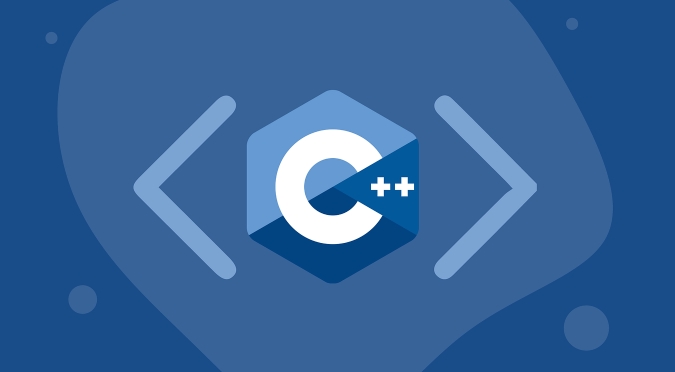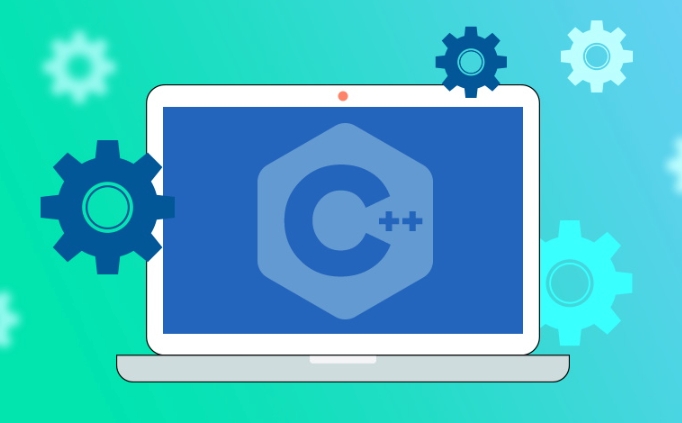Type erasure in C allows different types to be treated uniformly through a common interface without templates or inheritance, achieved by combining templates and polymorphism; 1) a virtual base class (Concept) defines the interface, 2) a template derived class (Model) adapts any type to this interface, 3) the concrete type is erased when stored as a base pointer, enabling heterogeneous collections and dynamic behavior with runtime overhead from virtual calls and dynamic allocation, as demonstrated by the AnyPrintable class that can hold and operate on arbitrary types while exposing only print and size operations.

Type erasure in C is a technique used to hide the concrete type of an object behind a uniform interface, allowing different types to be treated uniformly without templates or inheritance. It's commonly used in libraries like std::function, std::any, and std::variant. Here's a practical and simple example to demonstrate how type erasure works.

Simple Type Erasure: A Type-Erased Holder
Suppose we want to create a container that can hold any type, but expose only a few operations — like printing or getting the size — without knowing the actual type at compile time.
#include <iostream>
#include <memory>
#include <string>
class AnyPrintable {
struct Concept {
virtual ~Concept() = default;
virtual void print() const = 0;
virtual size_t size() const = 0;
};
template<typename T>
struct Model : Concept {
T data;
Model(T value) : data(std::move(value)) {}
void print() const override {
std::cout << data;
}
size_t size() const override {
if constexpr (requires { data.size(); }) {
return data.size();
} else {
return 1;
}
}
};
std::unique_ptr<Concept> p_obj;
public:
template<typename T>
AnyPrintable(T value) : p_obj(std::make_unique<Model<T>>(std::move(value))) {}
void print() const {
if (p_obj) p_obj->print();
}
size_t size() const {
if (p_obj) return p_obj->size();
return 0;
}
};Usage Example
int main() {
AnyPrintable a = 42;
AnyPrintable b = std::string("Hello, world!");
AnyPrintable c = std::vector<int>{1, 2, 3, 4, 5};
a.print(); std::cout << " (size: " << a.size() << ")\n";
b.print(); std::cout << " (size: " << b.size() << ")\n";
c.print(); std::cout << " (size: " << c.size() << ")\n";
return 0;
}Output:

42 (size: 1) Hello, world! (size: 13) 12345 (size: 5)
How It Works
- Concept: Defines the interface (what operations are allowed).
- Model
: Template that adapts any type Tto satisfy the concept. - Type Erasure: Once stored, the actual type
Tis erased — only theConceptinterface is used. - No Templates in Interface: Users of
AnyPrintabledon’t need to be templates.
This is similar to how std::function<void()> can store a lambda, function pointer, or functor — all different types erased behind one interface.
Key Benefits
Enables heterogeneous collections:

std::vector<AnyPrintable> items = {42, std::string("hi"), 3.14}; for (const auto& item : items) { item.print(); std::cout << "\n"; }Avoids inheritance hierarchies (no need for all types to derive from a base class).
Keeps interface simple and clean.
- Uses dynamic allocation (can be optimized with small object optimization).
- Runtime overhead due to virtual calls (vs. compile-time templates).
- Not a replacement for templates — it’s a tool for specific use cases where dynamic behavior is needed.
Notes and Trade-offs
This example shows the core idea: wrap a type in a template, inherit from a common interface, and store via a pointer to that interface — the type is "erased" from the outside view.
Basically just a blend of templates and polymorphism to get the best of both worlds.
The above is the detailed content of C type erasure example. For more information, please follow other related articles on the PHP Chinese website!

Hot AI Tools

Undress AI Tool
Undress images for free

Undresser.AI Undress
AI-powered app for creating realistic nude photos

AI Clothes Remover
Online AI tool for removing clothes from photos.

Clothoff.io
AI clothes remover

Video Face Swap
Swap faces in any video effortlessly with our completely free AI face swap tool!

Hot Article

Hot Tools

Notepad++7.3.1
Easy-to-use and free code editor

SublimeText3 Chinese version
Chinese version, very easy to use

Zend Studio 13.0.1
Powerful PHP integrated development environment

Dreamweaver CS6
Visual web development tools

SublimeText3 Mac version
God-level code editing software (SublimeText3)
 What is high-frequency virtual currency trading? The principles and technical implementation points of high-frequency trading
Jul 23, 2025 pm 11:57 PM
What is high-frequency virtual currency trading? The principles and technical implementation points of high-frequency trading
Jul 23, 2025 pm 11:57 PM
High-frequency trading is one of the most technologically-rich and capital-intensive areas in the virtual currency market. It is a competition about speed, algorithms and cutting-edge technology that ordinary market participants are hard to get involved. Understanding how it works will help us to have a deeper understanding of the complexity and specialization of the current digital asset market. For most people, it is more important to recognize and understand this phenomenon than to try it yourself.
 Explain RAII in C
Jul 22, 2025 am 03:27 AM
Explain RAII in C
Jul 22, 2025 am 03:27 AM
RAII is an important technology used in resource management in C. Its core lies in automatically managing resources through the object life cycle. Its core idea is: resources are acquired at construction time and released at destruction, thereby avoiding leakage problems caused by manual release. For example, when there is no RAII, the file operation requires manually calling fclose. If there is an error in the middle or return in advance, you may forget to close the file; and after using RAII, such as the FileHandle class encapsulates the file operation, the destructor will be automatically called after leaving the scope to release the resource. 1.RAII is used in lock management (such as std::lock_guard), 2. Memory management (such as std::unique_ptr), 3. Database and network connection management, etc.
 C vector get first element
Jul 25, 2025 am 12:35 AM
C vector get first element
Jul 25, 2025 am 12:35 AM
There are four common methods to obtain the first element of std::vector: 1. Use the front() method to ensure that the vector is not empty, has clear semantics and is recommended for daily use; 2. Use the subscript [0], and it also needs to be judged empty, with the performance comparable to front() but slightly weaker semantics; 3. Use *begin(), which is suitable for generic programming and STL algorithms; 4. Use at(0), without manually null judgment, but low performance, and throw exceptions when crossing the boundary, which is suitable for debugging or exception handling; the best practice is to call empty() first to check whether it is empty, and then use the front() method to obtain the first element to avoid undefined behavior.
 How to develop AI-based text summary with PHP Quick Refining Technology
Jul 25, 2025 pm 05:57 PM
How to develop AI-based text summary with PHP Quick Refining Technology
Jul 25, 2025 pm 05:57 PM
The core of PHP's development of AI text summary is to call external AI service APIs (such as OpenAI, HuggingFace) as a coordinator to realize text preprocessing, API requests, response analysis and result display; 2. The limitation is that the computing performance is weak and the AI ecosystem is weak. The response strategy is to leverage APIs, service decoupling and asynchronous processing; 3. Model selection needs to weigh summary quality, cost, delay, concurrency, data privacy, and abstract models such as GPT or BART/T5 are recommended; 4. Performance optimization includes cache, asynchronous queues, batch processing and nearby area selection. Error processing needs to cover current limit retry, network timeout, key security, input verification and logging to ensure the stable and efficient operation of the system.
 C bit manipulation example
Jul 25, 2025 am 02:33 AM
C bit manipulation example
Jul 25, 2025 am 02:33 AM
Bit operation can efficiently implement the underlying operation of integers, 1. Check whether the i-th bit is 1: Use n&(1
 C function example
Jul 27, 2025 am 01:21 AM
C function example
Jul 27, 2025 am 01:21 AM
Functions are the basic unit of organizing code in C, used to realize code reuse and modularization; 1. Functions are created through declarations and definitions, such as intadd(inta,intb) returns the sum of the two numbers; 2. Pass parameters when calling the function, and return the result of the corresponding type after the function is executed; 3. The function without return value uses void as the return type, such as voidgreet(stringname) for outputting greeting information; 4. Using functions can improve code readability, avoid duplication and facilitate maintenance, which is the basic concept of C programming.
 C Standard Library Explained
Jul 25, 2025 am 02:11 AM
C Standard Library Explained
Jul 25, 2025 am 02:11 AM
The C standard library helps developers improve code quality by providing efficient tools. 1. STL containers should be selected according to the scene, such as vector suitable for continuous storage, list suitable for frequent insertion and deletion, and unordered_map is suitable for fast search; 2. Standard library algorithms such as sort, find, and transform can improve efficiency and reduce errors; 3. Intelligent pointers unique_ptr and shared_ptr effectively manage memory to avoid leakage; 4. Other tools such as optional, variant, and function enhance code security and expressiveness. Mastering these core functions can significantly optimize development efficiency and code quality.
 Understanding the C ABI
Jul 24, 2025 am 01:23 AM
Understanding the C ABI
Jul 24, 2025 am 01:23 AM
C ABI is the underlying rule that the compiler follows when generating binary code, which determines mechanisms such as function calls, object layout, name adaptation, etc. 1. It ensures that different compilation units interact correctly, 2. Different compilers or versions may adopt different ABIs, affecting dynamic library links, STL transfers, virtual function calls, etc. 3. Cross-platform development, long-term system maintenance, third-party library use and other scenarios need to pay special attention to ABI consistency, 4. ABI can be controlled through macro definitions and compilation options, and use tools to view the symbol table to judge consistency.







